Jackson's enormous fame through much of the nineteenth century sustained a cottage industry among artists and craftsmen who produced souvenirs and folk art renderings for sale and home display. For some, the ubiquity of Old Hickory's likeness was too much of a good thing. "We have Jackson hats, and Jackson coats and Jackson jackets, and Jackson trousers, and Jackson boots, and Jackson slippers," complained one anonymous editorialist in the Cincinnati Daily Gazette in 1834. "From our public squares to the country taverns, from the Hall of State to our modest homes, all is Jackson, Jackson, Jackson."

Battle of New Orleans fraktur
between 1815 and 1845; ink and watercolor
by Magdalena Hostetter, artist
The Historic New Orleans Collection, 2012.0405.3
Magdalena Hostetter, born in Lancaster County, Pennsylvania, in 1793, copied a circa-1815 aquatint engraving by William Strickland (1788–1854). People all over the country—professionally trained and self-taught artists—were creating images of the famous General Jackson for the public and for their own homes.

Bas-relief portrait of Andrew Jackson
twentieth century; brass, velvet, and wood
The Historic New Orleans Collection, 1963.9
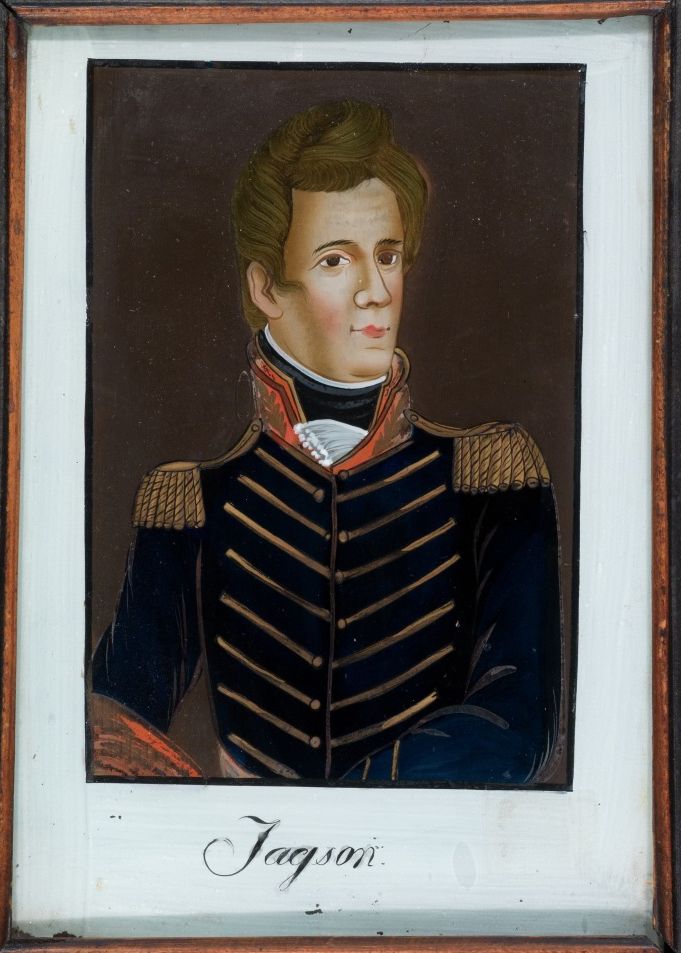
Reverse glass portrait of Andrew Jackson
ca. 1860; paint on glass
The Historic New Orleans Collection, 2012.0405.1
This folk art portrait of the famous general unaccountably misspells his name as "Jaqson." The unknown artist possibly copied an 1860 engraving by Henry B. Hall (1808–1884) that was in turn based on an 1819–20 original painting by John Vanderlyn (1775–1852).
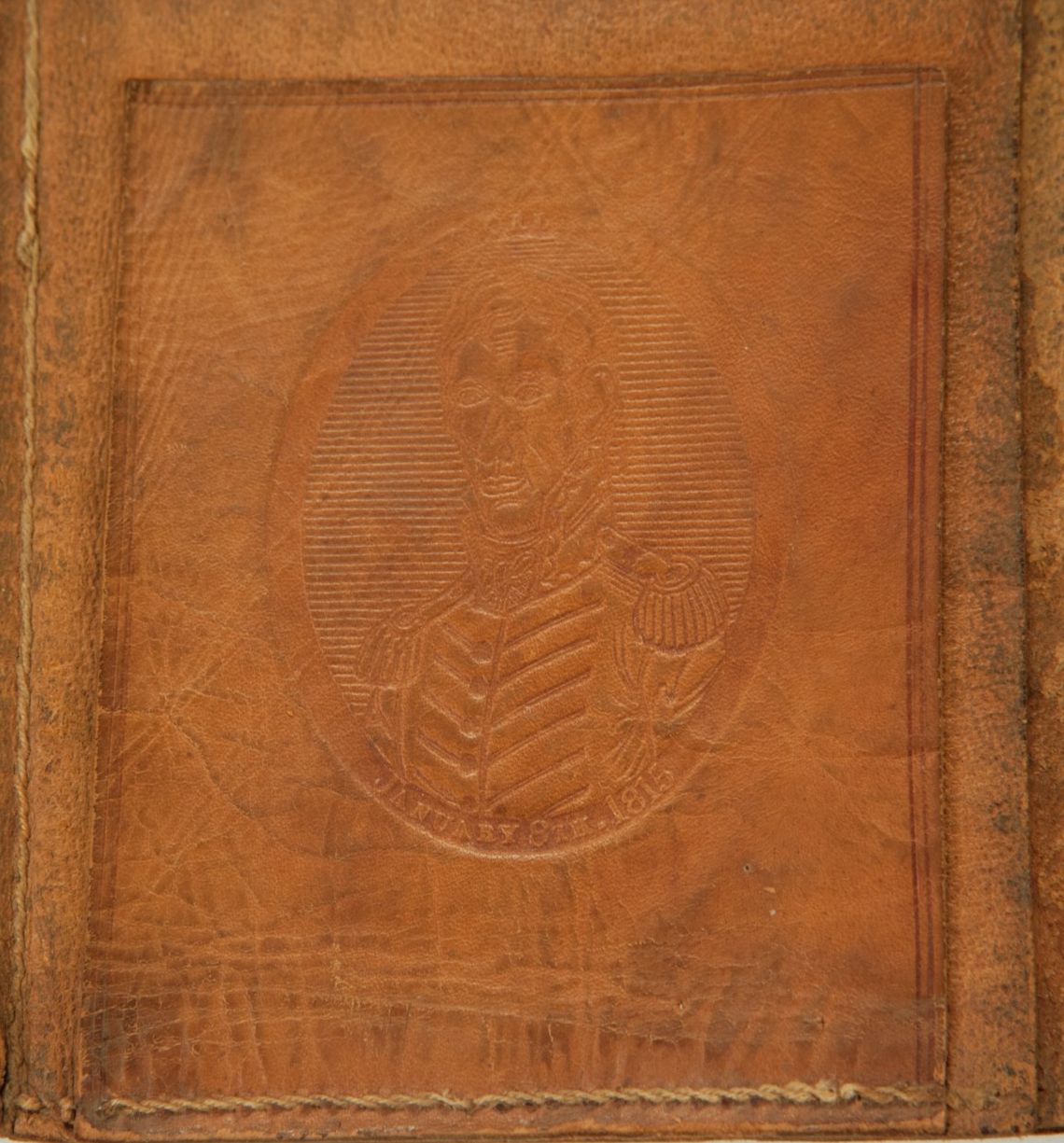
Andrew Jackson commemorative wallet
between 1815 and 1850; tooled leather
The Historic New Orleans Collection, 2013.0103
The interior panels of this leather wallet are embossed with two identical tooled portraits of General Jackson in uniform, with small block-letter inscriptions reading "NEW ORLEANS / JANUARY 8TH 1815." It may have been crafted as a souvenir of the 1824 or 1828 presidential election.
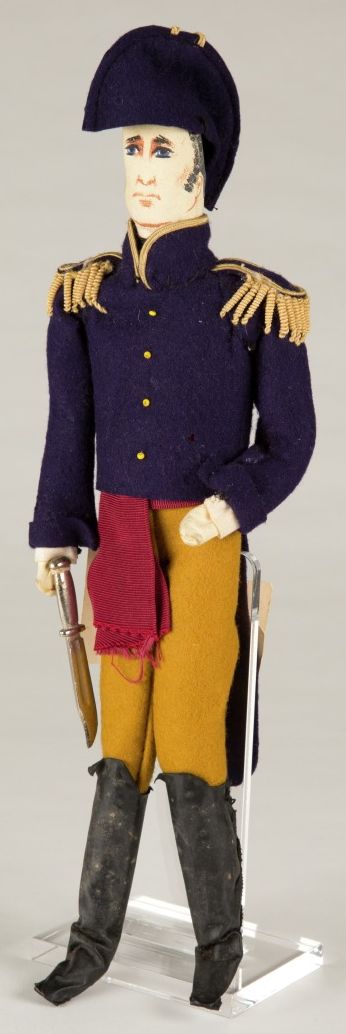
Andrew Jackson doll
mid-twentieth century; tempera, felt, grosgrain, leather, linen, vinyl
The Historic New Orleans Collection, 2004.0186.4
This is one of a pair of dolls, created by an unknown maker, that may have been inspired by the film The Buccaneer. A famous and possibly apocryphal meeting between General Jackson and the pirate Jean Laffite is said to have taken place in late 1814, shortly before the Battle of New Orleans.
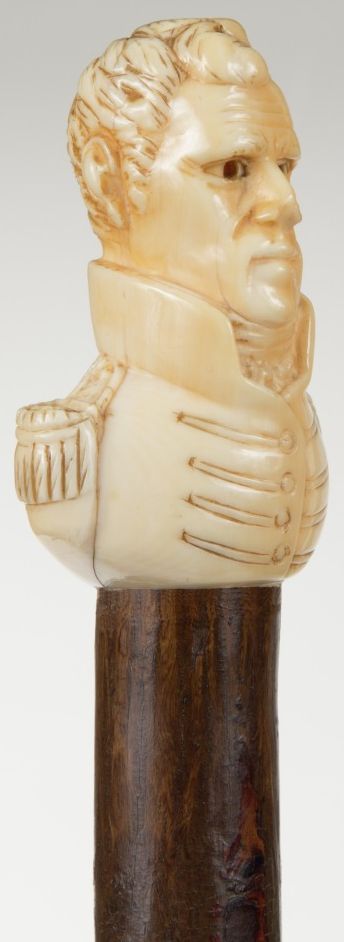
Cane with portrait-bust handle
possibly between 1824 and 1860; carved ivory and hickory with bone and copper alloy
The Historic New Orleans Collection, 2014.0249.2
Souvenir walking sticks made of hickory from the Hermitage were popular long after Jackson's death, at least as late as the 1880s. Once in hand, the sticks could be finished and decorated according to the tastes of each owner.
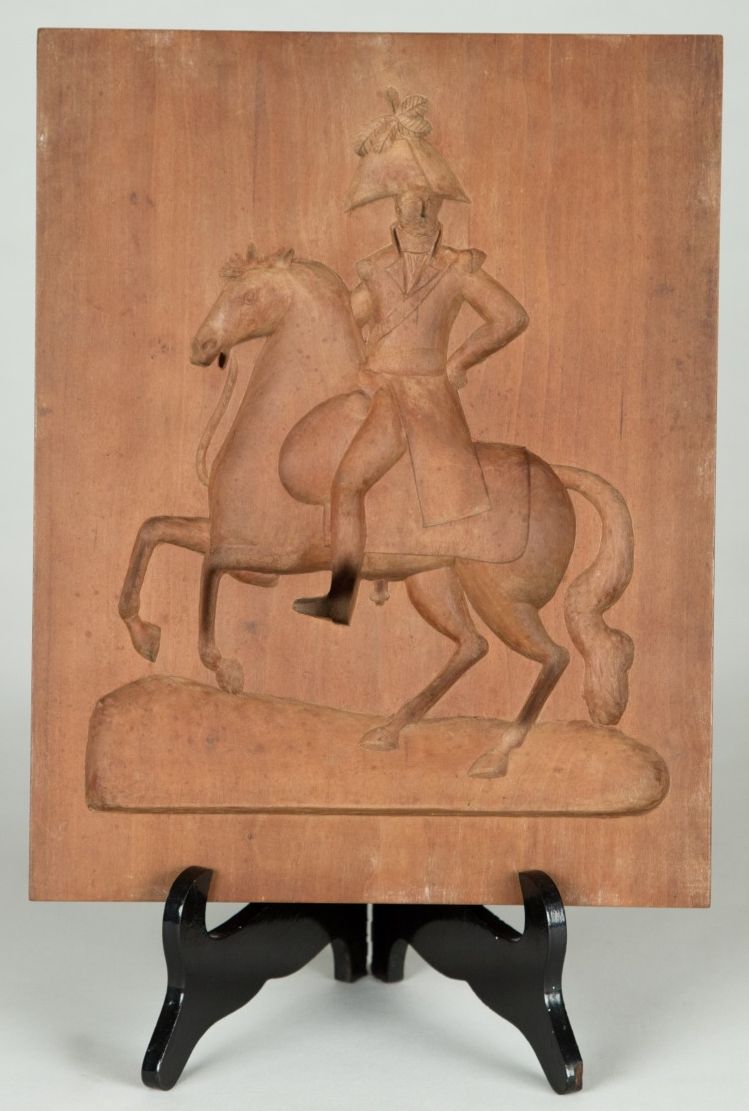
Cherrywood gingerbread mold
mid-nineteenth century; carved wood
The Historic New Orleans Collection, 1954.27.1
The tradition of carved wooden cookie and gingerbread molds dates back to the fifteenth-century baking guilds of northern Europe. Cakes or biscuits shaped like kings, mythological creatures, and other figures were thought to bring luck. German and Polish immigrants brought the mold-carving tradition to America in the eighteenth and nineteenth centuries.
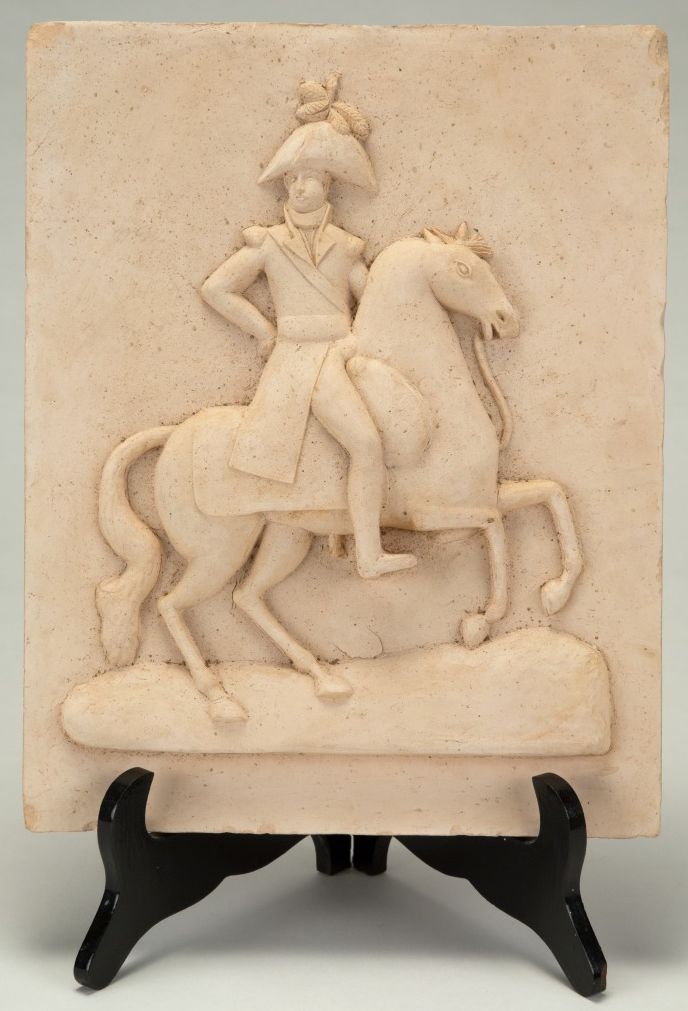
Clay image of Andrew Jackson cast from gingerbread mold
ca. 1950; terra cotta
The Historic New Orleans Collection, 1954.27.2
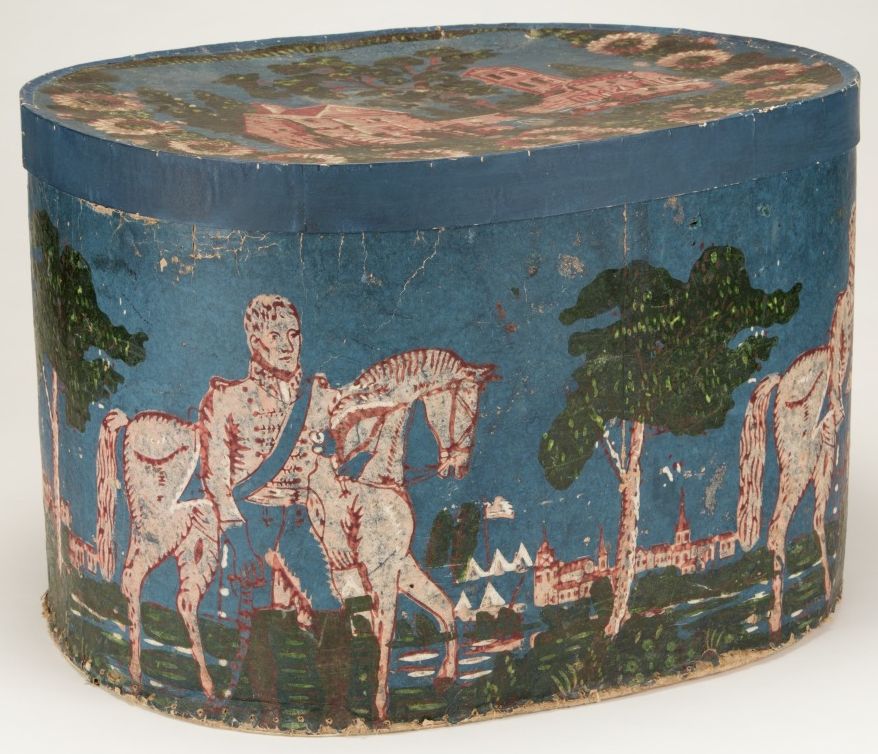
Andrew Jackson bandbox
between 1820 and 1845; color woodblock on paper adhered to cardboard
The Historic New Orleans Collection, 2012.0405.2
Inexpensive pasteboard boxes for the storage of household articles were common features of mid-nineteenth-century American closets. They were often covered with colorful printed paper, and some designs commemorated popular political figures such as presidents Andrew Jackson and William Henry Harrison.
